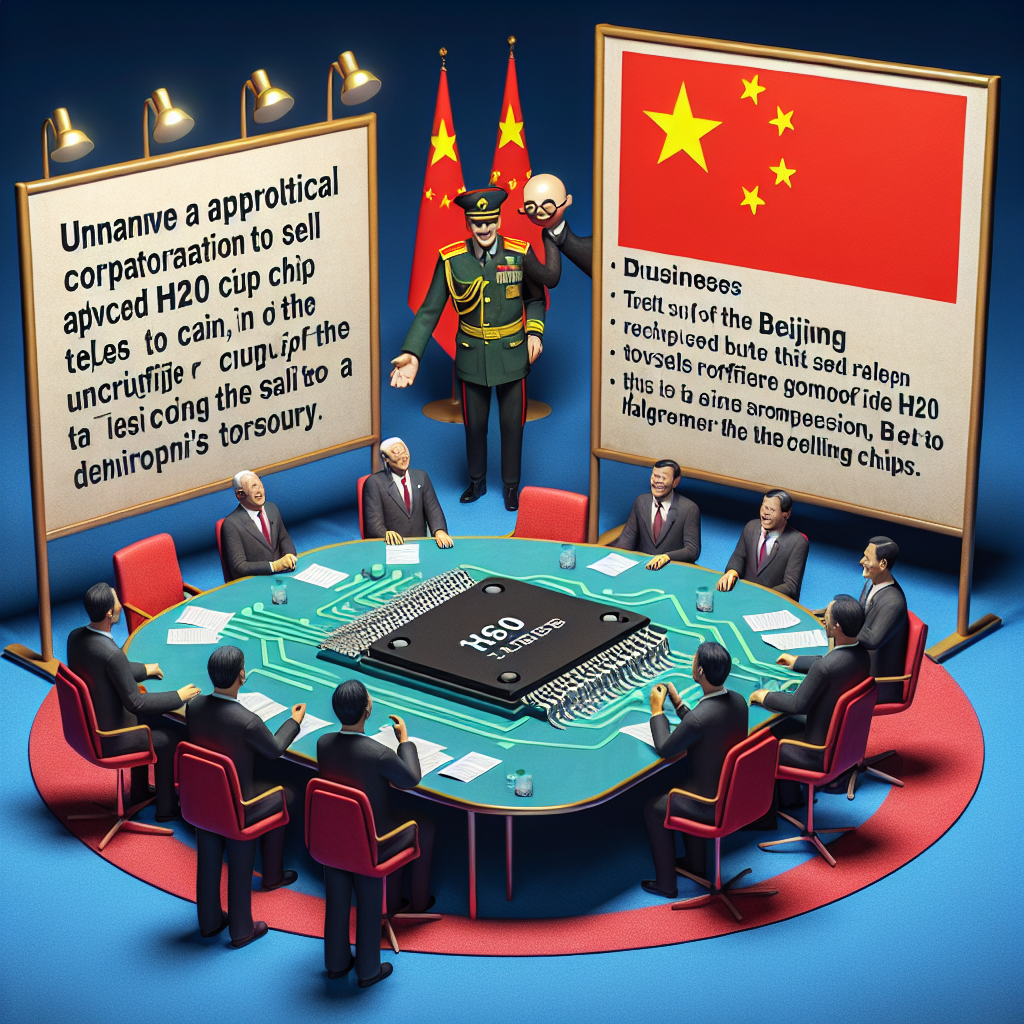The United States President Trump has just allowed the technology giant Nvidia to sell H20 chips to China, but the company must pay 15% of its sales revenue to the US Treasury. However, the Beijing authorities have pressured enterprises to suspend the procurement of H20 chips.
According to the Financial Times, on July 15th, the day after the Trump administration lifted the export control of H20, US Secretary of Commerce Howard Lutnick stated that the US would not sell the best products to China, nor the second-best products, or even the third best products. “We hope to sell enough products to China so that Chinese developers will continue to need the US technology ecosystem.”
Subsequently, the Beijing government listed Nvidia’s H20 chip as a “strategic commodity” and requested major cloud service providers to suspend the purchase of H20 chips. This move could benefit Chinese domestic companies such as Biren Technology, Huawei, Enflame, Moore Threads, and others.
However, a reversal of the situation occurred – DeepSeek abandoned the use of Huawei’s Ascend AI processor to train its R2 model due to instability in performance, insufficient chip-to-chip connection speed, and restrictions of Huawei’s core software platform CANN.
This raises doubts about whether Beijing can truly rely on its own hardware to drive AI development.
With the increasing sanctions imposed by the United States on China’s high-tech sector, since the mid-2010s, the Chinese Communist Party has long claimed to achieve technological independence, especially in emerging technology fields. However, despite the government’s investment of billions of dollars over the years to support wafer fabs and semiconductor industries, Chinese technology still lags behind the West, making it difficult to establish a complete and independent AI supply chain.
Additionally, China lacks a software ecosystem that can rival CUDA. CUDA is a software computing platform and programming model developed by Nvidia that significantly enhances computing efficiency.
Nvidia has been providing high-performance GPUs (Graphics Processing Units) paired with a stable and versatile CUDA software ecosystem for over a decade. Therefore, major AI companies in China, including Alibaba, Baidu, Tencent, and DeepSeek, rely on Nvidia’s hardware and software.
Although Alibaba and Baidu have developed their own AI processors, they still heavily purchase Nvidia H20.
According to semiconductor research firm SemiAnalysis, Nvidia produced approximately one million units of HGX H20 last year, almost all of which were bought by China.
SemiAnalysis previously released a report pointing out that Huawei’s AI processor Ascend 910C is touted as “Made in China,” but it actually uses TSMC’s 7nm chips. Another model, Ascend 910B, also utilizes TSMC chips, raising questions about China’s self-reliance.
Researcher Lennart Heim from the RAND Corporation also stated that in 2024, Huawei illegally obtained around three million chips from TSMC to produce approximately 1.4 to 1.5 million Ascend 910C chips, a quantity that rivals Nvidia’s supply to China.
However, apart from Huawei’s self-developed Pangu model, other Chinese companies still prefer Nvidia.
For instance, DeepSeek’s R1 model was trained with 50,000 Nvidia Hopper series GPUs, including 30,000 HGX H20, 10,000 H800, and 10,000 H100, with its software platform heavily relying on CUDA.
When DeepSeek was developing the R2 model, despite the Chinese authorities hoping it would switch to Huawei’s Ascend 910, due to reasons such as unstable performance, it ultimately reverted to using Nvidia’s GPUs for training, only using Ascend during inference.
In terms of hardware, China currently cannot produce advanced AI chips comparable to AMD and Nvidia in the local market.
All leading AI chip companies in China, including Huawei, Biren, Moore Threads, are on the US Commerce Department’s Entity List and cannot utilize TSMC’s advanced process technology. These companies can only rely on SMIC, whose technology still lags behind.
Although SMIC claims to produce 7nm chips and plans to progress to 6nm and 5nm, questions remain about production capacity and yield.
On the software front, Huawei’s CANN and other software lag behind CUDA mainly because fewer people use Ascend chips, making it challenging to attract developers. Conversely, the widespread adoption of the CUDA platform is due to the presence of millions of Nvidia GPUs, creating a positive feedback loop.
Even if China can supply a large number of Ascend or Biren GPUs, if the software platform is immature, developers will still not choose these processors. DeepSeek’s failure in training R2 is a prime example.
Therefore, China’s AI semiconductor industry is constrained by insufficient production capacity, technological limitations, excessive competition among enterprises, making it challenging to challenge Nvidia’s established semiconductor industry ecosystem.
(This article referred to the report by Tom’s Hardware)

